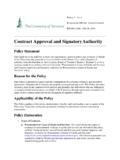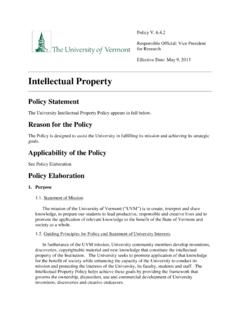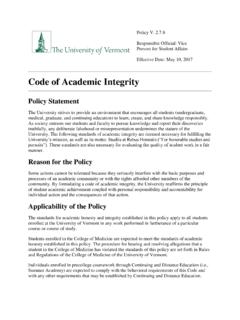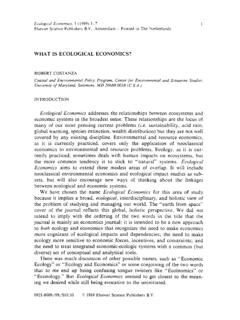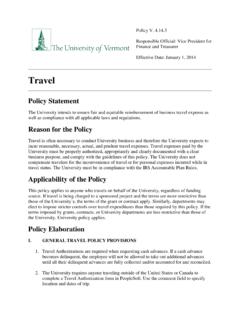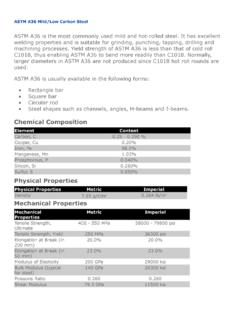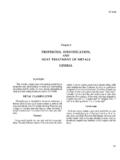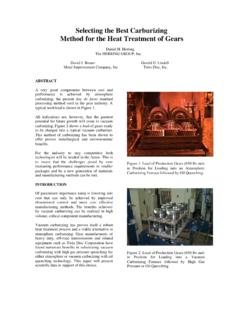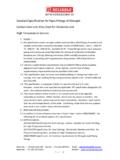Transcription of ME124 Experiment #7: The ASTM Tensile Test
1 ME124 Experiment #7: ME124 Experiment #7: The ASTM Tensile TestThe ASTM Tensile TestLecture 2:Lecture 2:Effects of heat treatment on Material Effects of heat treatment on Material Properties of 4130 SteelProperties of 4130 SteelSpring 2003 Spring 2003 Lecture 2 Lecture 2 Brief review of heat treatment process and TTT diagrams Brief review of heat treatment process and TTT diagrams for 4130 steelfor 4130 steel Sample results from previous Tensile tests with untreated Sample results from previous Tensile tests with untreated and quenched specimensand quenched specimens Interpretation and discuss of
2 ResultsInterpretation and discuss of results Effects of tempering Effects of tempering heat treatment of SteelHeat treatment of Steel Why?Why?Alter steel microstructure to obtain desired mechanical properties Original structure of HR/annealed 4130 is some Fe ( ) and Fe3C combination For increased strength/hardness, martensiticmicrostructure is desired Martensiteformation requires rapid cooling (quenching) Critical cooling rate increases with carbon content Compromise!Compromise!Increased strength accompanies reduced ductility and toughnessImpact of carbon ContentImpact of carbon Content heat treat-ability varies upon carbon content Low carbon steels unresponsive to heat treatment ; cold-workingis most effective strategy High carbon steels are difficult to heat treat owing to high quenching rates required; steels are already strong and hard due to high %C Medium carbon steels can be heat -treated to improve strength.
3 Alloying elements (Ni, Cr, Mo) alter ITT diagrams, reduce quenching ratesMicrostructuralMicrostructuralEffec ts of QuenchingEffects of QuenchingquenchingFCC structureBCC structureITT Diagram ITT Diagram 4130 Steel4130 Steel4130 Composition (%wt) Mn4130 Steel 4130 Steel HardenabilityHardenability((JominyJominy Test)Test)Thermal Modeling (Lumped Capacitance)Thermal Modeling (Lumped Capacitance)**length scale derived from Volume/Area for specimenThermal Modeling (cont d)Thermal Modeling (cont d)Approximate thermal trajectory (h=500 W/mK)Martensiteformation zone heat treatment Process for 4130 SteelHeat treatment Process for 4130 SteelMaintain at 900 C (1652 F) for 4+ hours Austenitization Rapidly quench the specimen in a water bathThe quenched specimen; note the presence of scaling on the surface resulting from oxidationRaw Tensile Test Data (4130 steel)**Raw Tensile Test Data (4130 steel)**Young s modulus ~unchanged (atomic-level property!)
4 **Fall 2000, ENGR1 data**Fall 2000, ENGR1 dataRaw Tensile Test Data (4130 steel)**Raw Tensile Test Data (4130 steel)**Young s modulus unchanged (atomic-level property!)**Spring 2003 **Spring 2003 ME124 preME124 pre--lab test datalab test dataSpecimen Appearance after FailureSpecimen Appearance after FailureQuenchedUntreatedImpact of Tempering Impact of Tempering MartensiteMartensite Martensiteis strong and hard, but brittle Tempering is a post-processing heat - treatment used to recover some degree of ductility Diffusion-based process ( carbon atoms) performed at elevated, sub-eutectoid temperature of ~250-600 Cdual-phase.
5 + Fe3 CBCT, 1-phaseHeat + Time(diffusion)Fe3C matrixTempering (cont d)Tempering (cont d) Increasing Fe3C particle size reduces boundary area, and determines amount of ductility recovered Fe3C particle size determined by diffusion (elapsed time) Diffusion process can be accelerated by increasing temperatureTempering of quenched 1080 steelTensile Test Data (Tempered 4130 steel) Tensile Test Data (Tempered 4130 steel)Specimen Length ComparisonSpecimen Length Compariso


